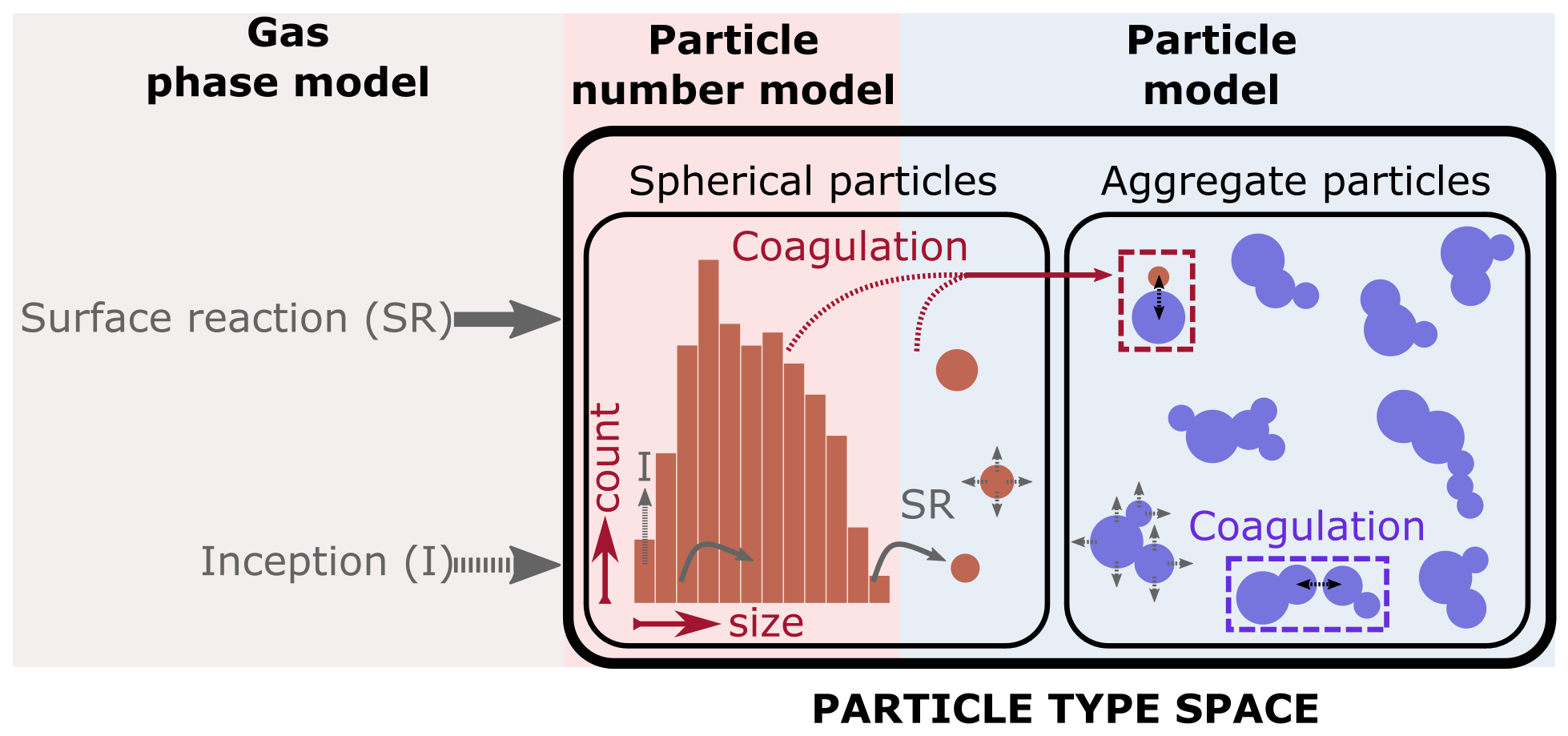A hybrid particle-number and particle model for efficient solution of population balance equations
- The model represents small particles simply with detailed structure for aggregates.
- The method is exact if primary particles are integer multiples of a monomer size.
- A speed-up of 40-50% is obtained for large ensembles.
- Superior performance is seen for systems with many small particles.
- The method reduces the chance of ensemble flooding at high inception rate.
 This work presents a hybrid particle-number and particle model to improve efficiency in solving population balance equations for type spaces spanning spherical and aggregate particles. The particle-number model tracks simpler, spherical particles cheaply by storing only the number of particles with a given one-dimensional internal coordinate, while the particle model allows resolution of the detailed aggregate structure that occurs due to collision and coagulation between particles by storing distinct computational entries for each particle. This approach is exact if primary particles are defined by their monomer count and the particle-number model increments in single monomers. A stochastic method is used to solve the population balance equations for the combined type space. The hybrid method works well for large ensembles (>212 particles) with a detailed particle model, where performing a finite number of particle-number updates is demonstrated to be 40-50% cheaper than updating an equivalent ensemble of discrete particles. These savings can be traded for a larger sample volume to increase the resolution in the particle size distribution or more repeat runs to reduce the total error. Run time improvements are curtailed at very high surface growth and coagulation rates due to the fixed cost of growth updates on the large aggregates formed; however, the hybrid method is still attractive in this case as its primary purpose is to reduce error by preventing saturation of the ensemble with simple particles at high inception rates.
This work presents a hybrid particle-number and particle model to improve efficiency in solving population balance equations for type spaces spanning spherical and aggregate particles. The particle-number model tracks simpler, spherical particles cheaply by storing only the number of particles with a given one-dimensional internal coordinate, while the particle model allows resolution of the detailed aggregate structure that occurs due to collision and coagulation between particles by storing distinct computational entries for each particle. This approach is exact if primary particles are defined by their monomer count and the particle-number model increments in single monomers. A stochastic method is used to solve the population balance equations for the combined type space. The hybrid method works well for large ensembles (>212 particles) with a detailed particle model, where performing a finite number of particle-number updates is demonstrated to be 40-50% cheaper than updating an equivalent ensemble of discrete particles. These savings can be traded for a larger sample volume to increase the resolution in the particle size distribution or more repeat runs to reduce the total error. Run time improvements are curtailed at very high surface growth and coagulation rates due to the fixed cost of growth updates on the large aggregates formed; however, the hybrid method is still attractive in this case as its primary purpose is to reduce error by preventing saturation of the ensemble with simple particles at high inception rates.
- This paper draws from preprint 211: A hybrid particle-number and particle model for efficient solution of population balance equations
- Access the article at the publisher: DOI: 10.1016/j.jcp.2019.03.033



